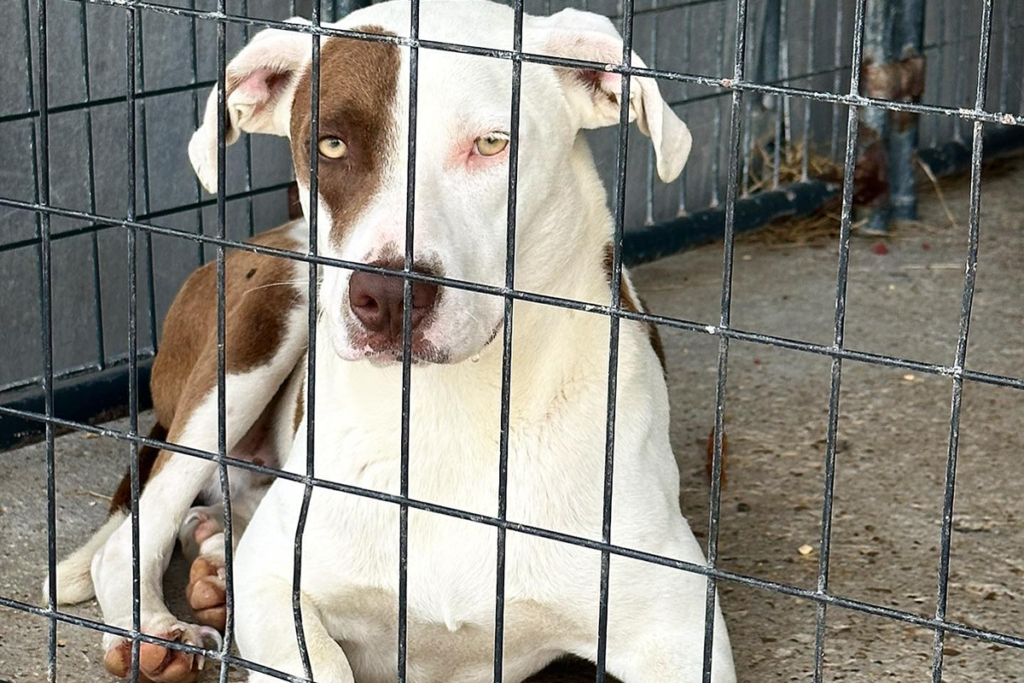It’s becoming difficult to deny that summer temperatures are increasing year after year, especially given the current heat waves that have settled across the U.S. in the past weeks. While the heat itself is dangerous, extremely dry conditions create droughts and produce high winds, escalating the risk of wildfires. Recent studies show fire season is starting earlier and ending later, with fire events becoming more extreme in terms of acres burned, duration and intensity.
Wildfires not only cause catastrophic environmental and socioeconomic impacts, but also have negative consequences for air quality and the overall health of humans and animals. Environmental observations indicate that summer burned areas in northern and central California have increased fivefold during 1996 to 2021 compared to 1971 to 1995. Further, 10 of the largest California wildfires have occurred in the last 20 years—five of which occurred in 2020 alone. In the coming decades, NOAA predicts a further increase in annual forest burned areas ranging from 3% to 52%.
Wildfires can burn through a forest at a speed of 10 kilometers (6 miles) an hour.
These cataclysmic fire events have caused many residents in high burn areas, such as California and the Western states of the U.S., as well as Alaska and Canada, to consider fire season on par with hurricane and tornado season. In fact, this has birthed a brand-new category of disaster: Megafires. This term refers to hundreds of fires burning at varying degrees in increasingly populated areas leading to tremendous amounts of damage and destruction.

As a result, many states have established evacuation plans and take lengthy precautions when conditions become prime for a possible fire. But for displaced pets and wildlife, there aren’t opportunities for plans or resources assuring their safety. In fact, in August 2023, the Maui Humane Society estimated that 3,000 animals were displaced by wildfires in Lahaina, Hawaii, and as of August 22nd, the organization had received over 1,300 reports of lost pets. The shelter took in nearly 800 animals, including cats, dogs, rabbits, a cockatiel, and turtles, and treated them for injuries such as smoke inhalation, dehydration, and burns. Those with less severe injuries, who are rescued might be rehabilitated and released back into the wild. But many animals develop severe scar tissue, are blinded, or otherwise unable to make a full enough recovery to survive on their own. In such cases, they will never know freedom again.

This is hard to look at, but don’t worry…he survived! (I wouldn’t do that to you) After a few months in expert care, he made a full recovery and was released back into the wild. Here’s his story…Rabbit dramatically rescued from California wildfire on the Mend
Even if an animal survives a wildfire, both they and their offspring will feel the effects of the burn for generations to come. For example, without trees, average air and soil temperatures increase, creating dangerous conditions for thermo-sensitive offspring. When you combine shrinking forested areas and natural habitats with an average of four percent of the world’s surface burning every single year, it’s no surprise that the impact of fires on wildlife and ecosystems are profound.
Furthermore, wildfires have detrimental impacts on water sources as well. In places that have experienced fires, scientists documented levels of contamination up to 100-times higher than previously recorded. When wildfires burn plastics and non-natural materials, the leftover residue causes heavy run-off of toxins that can contaminate bodies of water. Burnt plants and brush disintegrate into nutrients like nitrogen and phosphorus. When rain sweeps high concentrations of these nutrients into aquatic ecosystems, dangerous algae blooms may occur that can lead to loss of underwater oxygen and dead zones. And it’s not just the water quality that is affected — the actual flow of rivers and streams tends to increase following a fire as well, leading to the flooding of polluted water into residential areas.
A lack of training and proper planning, combined with the dramatic increase of wildfire occurrences across the Americas, has led to the deaths of millions of animals. While fire prevention and quick response to an active burn by firefighting teams is crucial, implementing animal rescue initiatives for domestic, livestock and wildlife is imperative. Many states are already incorporating plans and continue to scale their efforts as these disasters escalate. During the 2021 Caldor fires in California, more than 600 animals were rescued from the flames. In late August, a fire ignited in the foothills of the Sierra Nevada Mountains and as of September 2nd, the fire had burned over 200,000 acres and continued to push eastward toward the region’s major population centers, threatening 34,000 homes and ranches, many of which housed domesticated animals, horses, pigs, chickens, and other livestock in stables and pens within the properties.

One Animal Control volunteer from El Dorado County, where the fire originated and worked at least seven straight days at a time, sometimes running on less than two hours of sleep, said…
“Often farm animals are not trained, nor are there evacuation routes set up on an owners’ property to get them safely into stock trailers. This circumstance creates an almost impossible feat for the volunteers to get these animals evacuated and volunteers often spend critical hours trying to rescue them.”
Another animal shelter volunteer said,
“Evacuation also adds unnecessary stress to the animals who are already anxious and scared. With smoke and helicopters overhead, the animals are overwhelmed, and you can’t let these animals know that you’re simply trying to help them to safety.”
In 2020, fires swept through 11 million acres of the Pantanal wetland. Based upon walkthroughs performed after the event, researchers believe more than 17 million animals died, a number they say is likely conservative.
That same year, more than 28 million acres in Australia burned, killing an estimated 3 billion wild animals. The images of the aftermath were gruesome, featuring koalas, kangaroos and other native species with obvious burn injuries, and other animals standing amongst the charred remains of their once-lush habitat.
Nearly 4% of the global land surface is burned annually.

LIKE A MOTH TO A FLAME
Many of us grew up learning about what we can do to prevent forest fires from Smokey Bear, but our continued human encroachment within our ecosystems is creating problems beyond simply being conscientious campers and hikers. Invasive grasses, initially introduced to feed livestock, burns much faster than native flora and allows a fire to accelerate and decimate areas that would have normally survived due to the high-water content of its original plants.
For centuries, Indigenous communities have practiced controlled burns, which rids an area of underbrush that often fuels fire. Between 4,000 and 5,000 controlled, or prescribed, burns are performed annually by the U.S. Forest Service. After many years of fire exclusion, an ecosystem that needs periodic fire becomes unhealthy. Trees are stressed by overcrowding; fire-dependent species disappear; and flammable fuels build up and become hazardous.
Even given these factors, 85% of forest fires are started by humans. A sad fact, and one that hasn’t changed in decades. What continues to grow however, is the size, intensity, and frequency of wildfires.
OR EVERY HUMAN THAT HURTS, THERE ARE A HANDFUL THAT HELP
North Valley Animal Disaster Group (NVADG) was founded in the late 1990’s by firefighter John Maretti after wildfires killed two people who refused to evacuate without their animals. And a firefighter was seriously burned trying to save one of the pet-owners.
In the early years, the organization was supported by members of the California Department of Forestry and Fire Protection, the Butte County Sheriff’s office, Animal Control, Board of Supervisors, and the county office of emergency management. These departments and their teams all recognized that human safety would be improved during a natural disaster if there was also a care and rescue plan for animals. Learning of the fledgling program, the community responded in kind, assisting with funds and materials for the start-up costs. However, approval of NVADG was based on strictly following emergency protocols and being fully trained and equipped, just like the professional teams, which required for top-grade PPEs, radios, and equipment.

Their core of dedicated volunteers trained, learned, and worked for three years to meet emergency standards – all without a shelter, warehouse, or official headquarters. Volunteers stored trailers and equipment, businesses donated meeting space and shelters were set up as needed for the two or three fires they responded to each year, but in 2008 the huge Humboldt and Butte Lightning fires tested the volunteer response with six weeks of fires and evacuations, while hundreds of animals were sheltered in temporary quarters. In the years that followed, the land only became drier, and the fires grew larger. By the end of the 2017, NVADG had responded to nine evacuations. The following year, NVADG spent 78 days caring for over 10,000 animals during the Camp Fire.
Further north, in British Columbia, the Animal Lifeline Emergency Response Team (ALERT) has been responding and rescuing domestic animals and livestock during wildfires and other natural disasters for 25 years. This spring, ALERT held a large animal emergency training course focused on technical aspects, as well as various emergency scenarios. This class was led by Rebecca Husted, a response education expert who has taught the course worldwide. More than 80 first responders, ALERT volunteers, veterinarians and specialists attended the course.
Many of the participants were ALERT volunteers who say this is exactly the kind of training they need ahead of wildfire season.
“ALERT’s main purpose is to be the help that shows up for animals, companion animals and livestock who also have to evacuate because we have some systems in place to evacuate humans but over the years, we haven’t had many systems to assist the animals,”
– Leann Manuel, ALERT Technical Large Animal Emergency Rescue team commander
Organizations like these are forming across fire prone communities and implemented in state and federal preparedness plans. There are many ways to volunteer and support these groups, who are ensuring that the devastation these fires bring to our forests, doesn’t take the lives of so many animals as well.
FROM THE ASHES
Animals struggle immensely following a wildfire. Though there is cause for hope when it comes to animals surviving the fire itself, they are faced with a completely changed ecosystem when the smoke clears. It’s then that many animals meet their demise.
The trees they once called home have been destroyed; even the rivers they once drank from have changed. Because of the considerable impact of a fire on the ecosystem, there’s a large number of animals who die after the fire from starvation, dehydration, lack of shelter or simply being unable to find a safe place to call home.

How we care and treat the forests after a fire is as important as the work done to fight the active blaze, and they make all the difference for the animals who return and try to live among the charred remains. Here are a few things you can do once you’re able to return to an area affected by wildfire:
Provide fresh water
Put out a small, clean bowl or bird bath in a place that’s safe from people and as far from your home as possible.
Let wildlife rest
If animals are fleeing a fire, they’re likely already tired and scared, so be patient and don’t scare them.
Don’t feed wildlife
Feeding wildlife can be harmful and may cause them to become dependent on humans.
Report injured wildlife
If you see an injured animal or think it needs help, contact your local wildlife rehabilitation center or animal control.
Help restore habitats
You can try cleaning debris from water sources, revegetating stream banks, and planting trees. You can also consult your local fish and game office for advice on what plants to use.
Have a safe summer!













